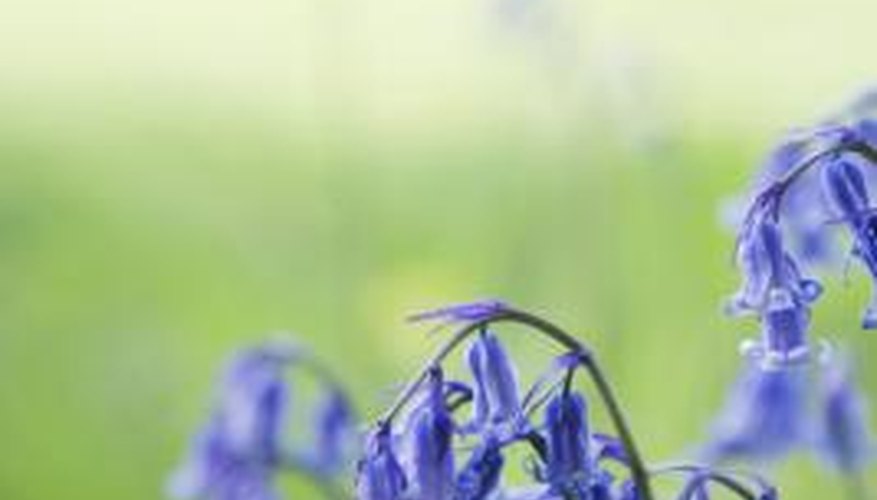Blue bell flowers, Campanula rotundifolia, are also known as bluebell bellflower, harebell and bluebell of Scotland. As the name suggests, the plant produces blue blossoms that are bell-shaped. The flowers grow on weak, thin steams that are not strong enough to support them, which creates the unusual, drooping look associated with blue bell flowers. Blue bell flowers bloom from June to September.
Cultivation
Blue bell flowers may be grown in full sunlight, partial shade or full shade, as long as they are planted in light, well-drained soil. Dry, sandy soil is best for blue bell flowers. The plant is easy to grow and will thrive even in rocky ground. Blue bell flowers attract hummingbirds to the garden, which are drawn by the colour and nectar the flowers offer.
- Blue bell flowers may be grown in full sunlight, partial shade or full shade, as long as they are planted in light, well-drained soil.
- Dry, sandy soil is best for blue bell flowers.
Flowers
Blue bell plants grow from 4 to 15 inches high. The flowers are blue or violet in colour, and shaped like small bells. Flowers may grow singly or in small clusters at the tips of stems. Blue bells are inexplicably associated with witches, as they are known in Scotland as Witches' Thimble. The flowers are attractive, but they offer no discernible scent to humans.
- Blue bell plants grow from 4 to 15 inches high.
- The flowers are blue or violet in colour, and shaped like small bells.
Leaves and Stems
Blue bell flower leaves are approximately 1 inch wide and begin to wither and die before the flowers appear. Leaves grow alternately along the thin stems, 1/2 to 2 inches long. The leaves grow upward from the stem, curving at the ends. The stems are slender and too weak to support the blossoms of the plant. Once flowers begin blooming, the stems sag and droop, arcing toward the ground.
- Blue bell flower leaves are approximately 1 inch wide and begin to wither and die before the flowers appear.
Seeds
Blue bell flowers produce seeds from July to September, once flowers begin to wither and drop from the plant. Instead of flowers, seed capsules will emerge on blue bell stems. Seeds need no special cold frame or additional treatment for germination; they may be planted directly into the ground for propagation. Seeds may be spread by wind to produce new flowers. Lightly sow seeds on the ground, and do not cover them, to plant new blue bell flowers. Growth will start quickly, but blue bell flowers will not appear on the plant for two years after planting.
- Blue bell flowers produce seeds from July to September, once flowers begin to wither and drop from the plant.
